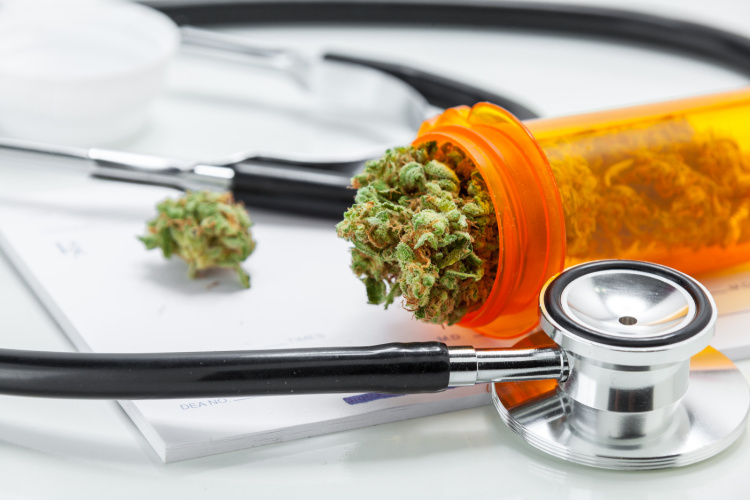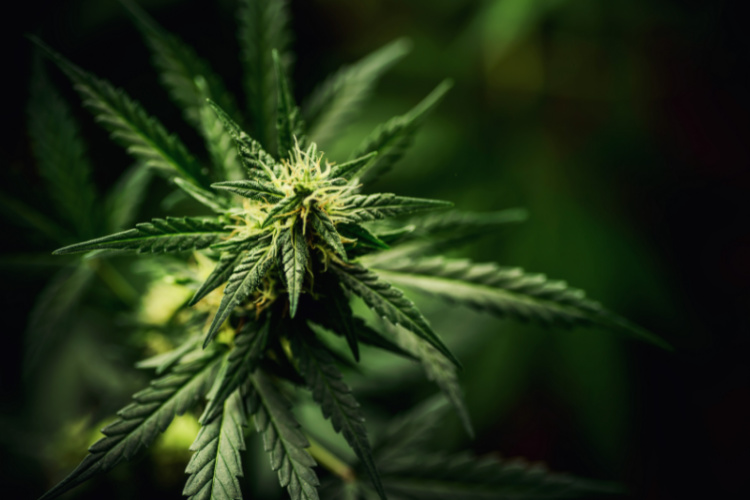Those of us in good health rarely pause to consider glaucoma, but that may be a mistake. While it’s often misunderstood as a disease of the elderly, glaucoma occurs in people of many different age groups, and it’s the second most common cause of blindness.
If you’re of a certain age, you may remember “marijuana and glaucoma” as a punchline. But while cannabis can’t “cure” glaucoma, it’s one of several potential treatments that can slow its progress. We’ll discuss them a little later in this article. In the meantime, if you’re interested in trying cannabis for glaucoma, here are some facts to know about the disease that will help guide your choice.
Awareness of an Irreversible Eye Condition
Glaucoma is a form of blindness caused by an increase in pressure inside the eye. This pressure compresses and damages the optic nerve, leading to irreparable vision loss. This damage—because it often occurs before there’s noticeable vision loss—takes place invisibly. This is perhaps the single most important reason you should be aware of glaucoma symptoms and options for treatment early in the game.
Glaucoma is often associated with old age, but that’s not quite accurate. While it’s true that its risk increases over time, at any given moment roughly 3 million Americans over the age of 40 have glaucoma, and that number is expected to rise as the United States population ages. Worldwide, glaucoma affects roughly 80 million people.
The Role of Interocular Pressure (IOP)
As we mentioned a moment ago, the symptoms of glaucoma—which include blurry vision, or the loss of side and/or peripheral vision—don’t tend to appear until after permanent damage has already taken place. That’s why it’s so critical that you know the risk factors for glaucoma and be sure to get regular ophthalmological exams, including a test to measure interocular pressure.

Interocular pressure, or “IOP,” is a measure of the fluid pressure within the eye. The method to determine IOP is known as tonometry; it’s a simple, safe, and painless test. Your doctor will use eyedrops to numb the surface of your eyes so that you won’t feel the tonometer during the test. While some patients experience a scratchy feeling on their cornea, this typically goes away within 24 hours.
Risk Factors and Prevention
Glaucoma doesn’t occur entirely at random. In the United States, certain populations—including some people of African-American, Hispanic and certain Asian heritages—are at greater risk of developing the disorder. What’s more, the odds rise significantly if a parent or sibling has glaucoma.
In addition to the risk factors associated with ethnicity, there are other potential indicators of increased risk. These include high blood pressure, diabetes, and the long-term use of corticosteroid eye drops.
One unusual risk factor is associated with yoga, the popular breathing- and flexibility-enhancing practice. While yoga has been shown to help reduce stress and boost our overall wellness, certain inverted poses may not be best option for those with glaucoma. According to the American Academy of Ophthalmology, headstands, forward bends, and downward dog can all increase intraocular pressure, and should be avoided if you have glaucoma.
Investigating the Standard Treatments
While there’s no cure for glaucoma, several treatments may slow the progression of the disease and help preserve vision. The simplest and least invasive of the conventional treatments involves eye drops that reduce the amount of ocular fluid the eye produces.
Alternatively, doctors can use lasers to help fluid drain out of your eye. It’s a simple in-office procedure that doesn’t require general anesthesia. Finally, if the aforementioned treatments fail to reduce interocular pressure, there are a number of relatively minimal surgical interventions that can help.
With that said, let’s turn now to the potential links between medical cannabis and glaucoma treatment and prevention.
How Does Marijuana Help Glaucoma?
To answer this question effectively, we need to first provide some background on cannabis and how it partners with our bodies to impart its medical and subjective effects.
The major “active ingredients” in cannabis are known as the cannabinoids. A family of natural chemicals, they include THC, CBD, and other more minor compounds. THC is the predominant cannabinoid found in the cannabis plant and, to a lesser extent, in hemp as well. Best known as being the main contributor to the cannabis plant’s euphoric “high,” THC imparts a number of useful medical effects. The most important as it relates to glaucoma is THC’s natural anti-inflammatory properties.

So…is marijuana actually good for glaucoma? Believe it or not, doctors have been trying to settle that question for decades. Starting in the 1970s, research on cannabis and glaucoma showed that THC, the primary cannabinoid in the cannabis plant, was effective at lowering ocular pressure.
In the past, this finding was largely dismissed, in part because the clinical research was built on faulty models, and in part because the amount of THC believed necessary to actually reduce IOP was too great to be practical.
In recent years, some researchers have revived this avenue of inquiry. Because the eye contains a high proportion of cannabinoid receptors, some hold out hope that targeted cannabinoid-based treatments could succeed where simple THC-based treatments fall short. To that end, one study suggests that several cannabinoid-based compounds may show us the way towards all-natural, sustainable glaucoma treatments.
Even more promising, an article recently published in the Review of Ophthalmology suggests that lower amounts of THC than first believed may have the most beneficial effect on IOP. Why is this significant? In the words of the article’s author, Dr. Sameh Mosaed:
“This suggests that, for at least some people, it may be possible to maximize the pressure-lowering effect without requiring sufficient THC to have a psychotropic effect. In other words, you may not need to get high to get the IOP-lowering you want.”
Needless to say, we’ll keep you updated on this and any other developments in the search for an effective treatment and preventative for glaucoma.
It’s worth pausing here to ask: How easy is it to get cannabis for glaucoma? While THC remains illegal at the federal level, it’s been approved for medical and/or recreational use in a majority of states. Check this recent list for current information.
What about CBD? While hemp-derived CBD is legal at the federal level and available in nearly every state, the current research suggests that CBD may actually raise IOP, not lower it.
Explore Medical Cannabis with Green Goods
We’re hopeful that cannabis may provide a gentle and effective response to glaucoma, and we’ll be keeping a close watch on this important topic. As firm believers in the power of medical marijuana, we’re always excited to share breaking news from the fascinating world of cannabis research.
We’re pleased to note that the states in which Green Goods operates—Maryland and Minnesota—both include glaucoma as a qualifying condition for obtaining a medical cannabis card. Learn more about becoming a medical cannabis patient in Minnesota and Maryland.
Do you have further questions about cannabis for glaucoma? Just ask! We’re here to help.
